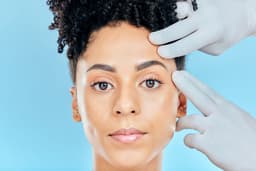How to Get Rid of Acne Scars: Proven Treatments from Medical Experts
Understanding Acne Scars: Why They Form and What Makes Them Difficult to Treat
Acne scars develop when inflammation from active breakouts damages the deeper layers of skin. The body attempts to heal this damage with collagen—but depending on how much is produced, the result may be:
- Depressed (atrophic) scars, such as ice pick, boxcar, or rolling scars
- Raised (hypertrophic or keloid) scars, more common on the body or in darker skin types
Unlike dark spots or post-inflammatory hyperpigmentation (PIH), true scars involve structural changes in the dermis. Topical creams alone are rarely effective for moderate to severe scarring, which is why professional guidance is essential.
Can You Really Get Rid of Acne Scars?
The answer depends on the type of scars, how long they’ve been present, and your skin’s response to treatment. While complete erasure of all scars isn’t always possible, significant improvement in texture, depth, and appearance is highly achievable using evidence-based protocols.
Overnight remedies or miracle creams often fail because scar tissue requires collagen remodeling, which takes time and cellular stimulation.
Note: Any treatment should be discussed with a licensed provider and reviewed against FDA and manufacturer guidelines to ensure safety and efficacy.
Proven Medical Treatments for Acne Scars
At Spectrum Skin Clinic, we offer multiple modalities that can be combined or used sequentially depending on your clinical assessment:
1. RF Microneedling (Radiofrequency Microneedling)
A gold standard for treating deep scars across the face and body. This treatment creates controlled micro-injuries and delivers heat to stimulate collagen and elastin production.
- Suitable for: Boxcar, rolling, and deep atrophic scars
- Safe for darker skin types with minimal risk of hyperpigmentation
2. Fractional Laser Resurfacing
Laser devices (such as fractional CO2 or erbium lasers) remove damaged layers of skin and stimulate remodeling.
- Best for: Atrophic scars and skin texture issues
- Downtime: Varies from 3 to 7 days
3. Chemical Peels
Medical-grade acids (salicylic, glycolic, TCA) exfoliate the top layer of skin and improve pigmentation from post-acne marks.
- Best for: Surface-level scars and discoloration
- Often combined with microneedling or LED therapy
4. Subcision
A technique used to release tethered scars beneath the surface by breaking up fibrous bands that pull the skin inward.
- Best for: Rolling scars
- Often combined with fillers or RF microneedling
5. Topical Retinoids and Prescription Creams
While not effective alone for deeper scars, retinoids help accelerate skin turnover and prep the skin for other procedures.
6. LED Light Therapy
Helps reduce inflammation, calm active acne, and support post-treatment healing. Particularly helpful when used alongside more intensive procedures.
Natural & At-Home Options for Scar Reduction
While clinical treatments provide the most reliable results, some natural methods and supportive at-home strategies may offer gradual improvement:
- Topical niacinamide: Reduces redness and improves skin barrier
- Vitamin C serums: Brightens tone and reduces PIH
- Gentle exfoliants (AHA/BHA): Smooth skin texture over time
- Zinc and omega-3s: Anti-inflammatory support through diet
Avoid DIY remedies like lemon juice, baking soda, or physical scrubs, which can worsen inflammation or damage skin.
Targeted Solutions for Specific Areas
Back and Body Acne Scars
- Thicker skin and higher friction make these areas more prone to hypertrophic scars
- Treatments: RF microneedling, salicylic peels, and LED therapy
Buttock Acne Scars
- Often caused by folliculitis or occlusive clothing
- Treatments: Exfoliating peels + targeted microneedling
Each area requires a custom plan—what works for facial scars may not be optimal for the body.
Timeline for Results: How Fast Can You Expect to See Improvement?
- Initial improvements can be seen after 2–4 weeks
- Significant changes typically take 3–6 months with consistent treatments
- Skin continues to remodel collagen up to 12 months post-treatment
Patience is essential. Professional guidance ensures the process is efficient, safe, and suited to your individual biology.
Frequently Asked Questions
Q: Can acne scars be removed completely? A: While complete removal is rare, substantial improvement in texture and tone is achievable with professional care.
Q: What’s better for acne scars—laser or microneedling? A: Both have value. Microneedling with RF is generally safer across skin types; lasers offer more aggressive resurfacing.
Q: Is it possible to remove scars overnight? A: No. Scar remodeling is a gradual biological process that requires weeks to months.
Q: What ingredients help fade acne scars? A: Retinoids, vitamin C, niacinamide, and AHAs are beneficial when used consistently.
Q: Are natural remedies effective? A: They can support the skin’s health, but deep scars typically require in-office treatments for visible improvement.
Professional Treatment in Irvine: Why Choose Spectrum Skin Clinic?
The journey to clear, confident skin begins with evidence-based treatment and realistic expectations. At Spectrum Skin Clinc | The Pur Health in Irvine, our team develops personalized scar treatment plans that integrate clinical science with supportive care.
Schedule a consultation to learn which treatment combination is right for your scar type, skin tone, and long-term goals.




